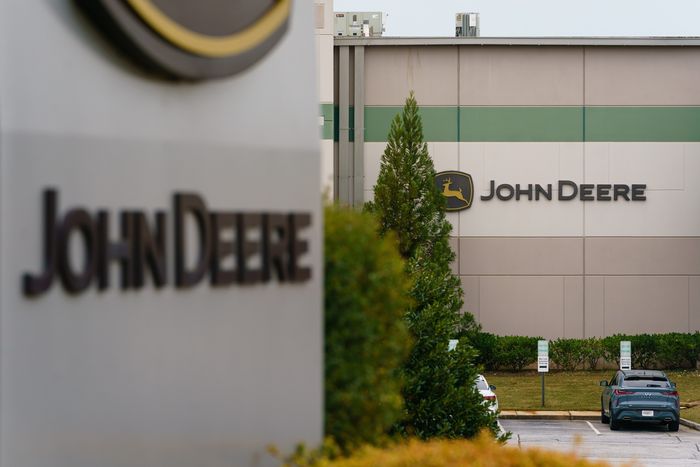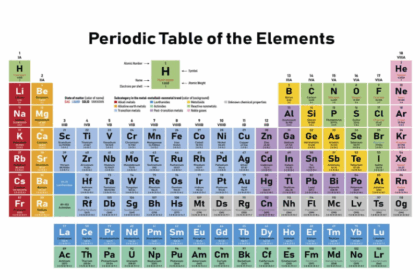The COLA is making a comeback.
Higher prices, a worker shortage and a revitalized labor movement are bringing about the return of pay increases tied to inflation, known as cost-of-living adjustments, or COLAs.
On Tuesday, striking workers at food maker Kellogg Co. ratified a contract that included a COLA, the second major labor agreement in recent weeks to feature such pay adjustments. Analysts say COLAs could spread in future negotiations between employers and unions.
Under a COLA, a worker’s pay rises to compensate for the increase in consumer prices. The idea is to protect wages in times when consumer prices are rising rapidly and unpredictably.
The provisions were often part of union contracts 40 or 50 years ago when inflation was high. Starting in the 1990s, as inflation slowed to more modest levels, COLAs became less prominent.
Now, resurgent inflation is leading some workers to ask for higher wages. Annual inflation in November accelerated to 6.8%, the Labor Department reported, the fastest in 39 years.
Economists and Federal Reserve officials have acknowledged they don’t know how high inflation will get nor how long it will last. Such uncertainty could make COLAs more attractive, said Harry Katz, an economist at Cornell University specializing in labor relations.
“COLAs exist not primarily because inflation is higher, it’s because there’s uncertainty about inflation,” he said. The provision “provides a way of basically sharing the risk.”
COLAs thus offer one avenue through which workers could be protected from the surging cost of living. But COLAs could also themselves contribute to inflation. Raising wages to compensate for higher prices could lead to a situation in which companies raise prices to recoup higher wages, which causes workers to ask for yet higher wages, causing the two to feed off each other.
“While understandable from the point of view of workers, the danger of widespread use of COLAs is they institutionalize inflation and contribute to a wage-price spiral,” said Michael Walden, professor emeritus at North Carolina State University.
Such a wage-price spiral emerged in the 1970s and was broken only by tighter monetary policy, Mr. Walden said. A wage-price spiral could reoccur if the Federal Reserve doesn’t raise interest rates significantly more than it has signaled, he said.
Some economists see less reason to worry. COLA clauses were only a small contributor to higher inflation in the 1970s and 1980s, which was propelled by other factors including oil crises, said Mr. Katz, the Cornell economist.
Further, a much smaller share of workers are in a union today, and COLAs are rarer, reducing the likelihood of a wage-price spiral, Mr. Katz said. Roughly 6.3% of private sector workers belonged to a union last year, down from 16.8% in 1983, according to the Labor Department.

UAW workers at Deere recently ratified a contract that adjusts wages every three months to match inflation.
Photo: Elijah Nouvelage/Bloomberg News
Last month, members of the United Auto Workers at Deere & Co. ended a five-week strike by ratifying a contract that, among other pay and benefit increases, would adjust wages every three months to match inflation.
Tuesday’s five-year contract between Kellogg and the Bakery, Confectionery, Tobacco Workers and Grain Millers International Union gives employees pay raises and quarterly cost-of-living adjustments. The agreement means that roughly 1,400 union members who had been on strike since Oct. 5 will go back to work.
Union members aren’t the only workers getting pay increases tied to inflation.
Minimum-wage workers will see pay increases reflecting the higher cost of living in several states including Arizona, Colorado, Maine, Minnesota, Montana, Ohio, Washington and South Dakota, according to an analysis by the National Conference of State Legislatures.
In Arizona, for example, minimum-wage workers will see their hourly pay rise 5.3% to $12.80 at the start of next year from the current $12.15. The minimum wage rose 1.3% at the beginning of this year, reflecting lower inflation at the onset of the pandemic.
A shrunken labor force, combined with a strong demand for labor, has given workers greater bargaining power. That could prompt more unions to ask for COLAs. A number of major union contracts expire next year, including between West Coast dockworkers and the companies that operate marine terminals. The International Longshore and Warehouse Union declined to comment.
“We’re going to see more efforts to get COLAs in the contracts, no doubt about that,” said Michael Lotito, co-chair of the Workplace Policy Institute at Littler, an employment law firm.
Thousands of striking workers at snack-food maker Mondelez International Inc., and commercial-truck manufacturer Volvo won wage increases in new contracts earlier this year. And healthcare workers recently averted a strike by ratifying a union agreement with Kaiser Permanente that would cover about 50,000 employees.
So far, nonunion workers have seen their wages rise faster than union workers whose pay increases tend to be set in multiyear contracts. In the third quarter, nonunion wages for private-sector workers rose 4.7% from the same quarter a year ago, compared with 3.5% for union wages, according to the Labor Department.
“If history is any guide, I expect we’ll see significant wage pressure in the union part,” said Gad Levanon, chief economist at the Conference Board.
Write to David Harrison at [email protected] and Sarah Chaney Cambon at [email protected]
Copyright ©2021 Dow Jones & Company, Inc. All Rights Reserved. 87990cbe856818d5eddac44c7b1cdeb8








